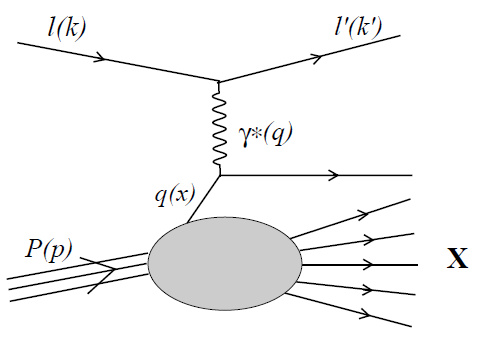Hadronic Physics Reactions
DIS diagram

Deep Inelastic Scattering corresponds to the scattering of a lepton (electron) off the proton, with the exchange of a virtual photon. Thanks to the photon's high virtuality (its 4-momentum squared), it interacts with a quark, which allow to probe the partonic structure of the proton. The proton remnants are undetected. The knowledge of the lepton scattering angle tells us about the longitudinal momentum fraction of the proton's momentum carried by the struck quark. The partonic structure of the proton can be parametrized by "Parton Distribution Functions" (pdf), which can be seen as probabilities of interacting with quarks (or gluons) carrying a certain longitudinal momentum.

Spacelike and Timelike Deeply Virtual Compton Scattering and Double Deeply Virtual Compton Scattering are reactions involving the scattering of real or virtual photons off quarks of the nucleon. As for DIS, the virtuality of at least one of the photon allows to probe the partonic content of the nucleon. These reactions which are sensitive to the longitudinal momentum of the quarks and their transverse position. The partonic structure of the nucleon can be parametrized by Generalized Parton Distributions (GPDs).


